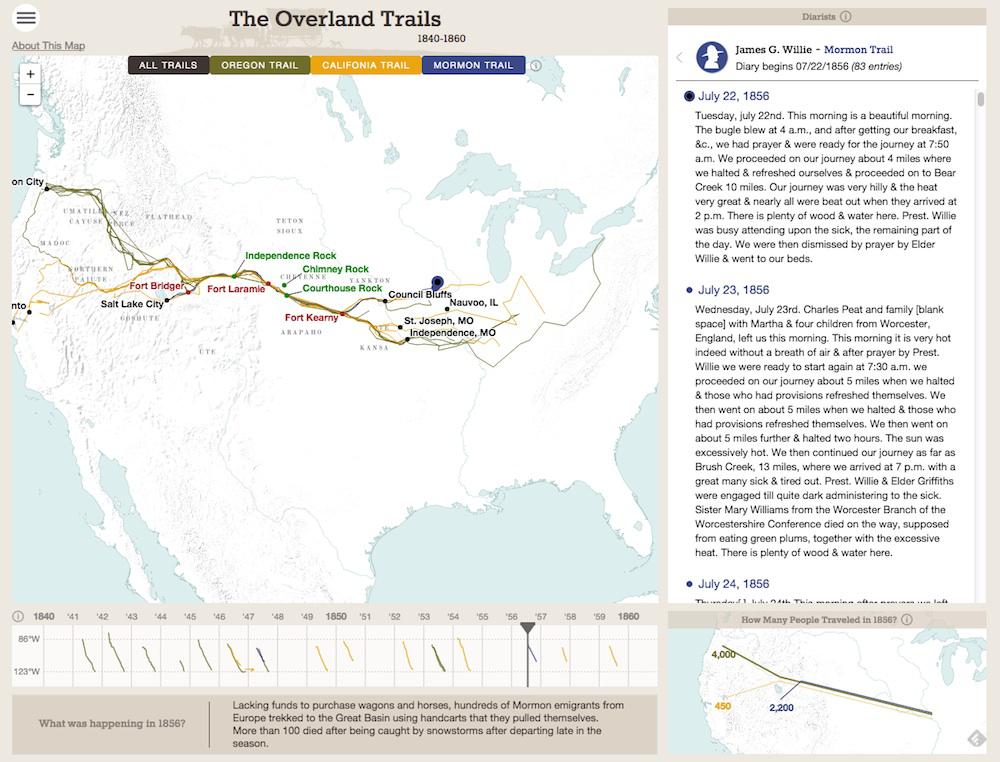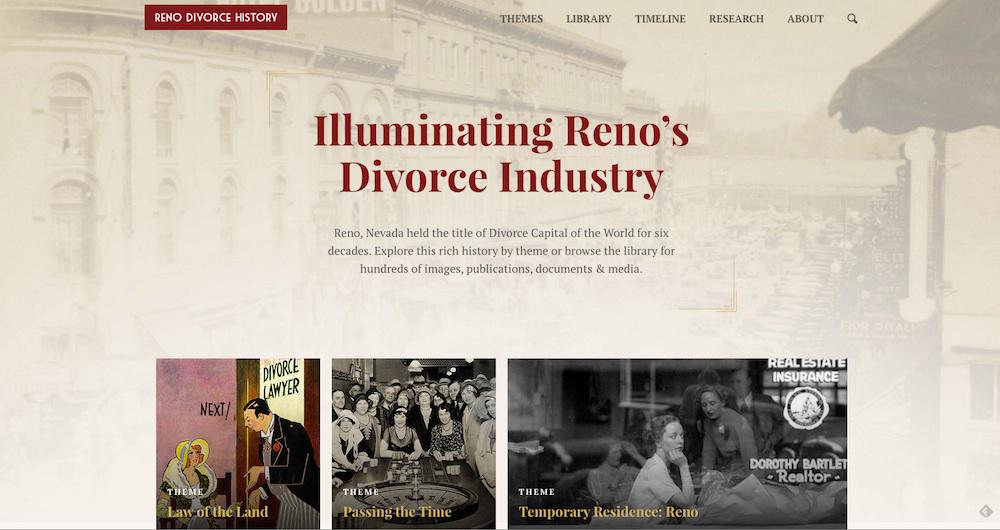Here are five digital history sites that absorbed my attention in 2015. I’ll be sharing five more on Monday, for your holiday bookmarking and browsing needs.

Histography.io
Histography, a project by Tel Aviv, Israel, interactive designer Matan Stauber, animates historical events from Wikipedia on a really fun timeline. Select for types of event (literature, inventions, disasters, discoveries), limit by time period, or select two types of event and see a comparative timeline. Hover over a dot and a related photo pops up; click, and the event expands, offering the choice to navigate to the Wikipedia page or view related events. Leave the sound on to enjoy a pleasing clicking effect that manages to neatly mimic the noise I always imagined coming from my Etch-a-Sketch when shaken.
Bonus: The timeline offers interesting snapshots of the way Wikipedia covers particular time periods and themes. Want to see how the history of women’s rights is currently portrayed on the dominant online encyclopedia? This would be a good place to start.

American Panorama
In 2013, the University of Richmond’s Digital Scholarship Lab released an online version of Charles O. Paulllin and John K. Wright’s 1932 Atlas of the Historical Geography of the United States, reviving and animating what was a tremendous accomplishment in cartography for its time. This week, the same group launched American Panorama—a new historical atlas, made from scratch. These maps can use the information we’ve accumulated in the 83 years since Paullin and Wright published; American Panorama will be a born-digital historical atlas that’s attuned to our concerns.
Right now the project offers four richly textured maps, on the forced migrations caused by the domestic slave trade; travel on the 19th-century overland trails; foreign-born populations within the States, between 1850 and 2010; and the 19th-century canal system. The maps offer layers of information, including infographics that change based on parameters that the viewer selects.
In the future, American Panorama will be adding many more maps (the director of the Digital Scholarship Lab Robert K. Nelson told Citylab, “We’re going to be doing a lot more—dozens—and at an accelerated pace”). Next up are maps about redlining and urban renewal—two important 20th-century phenomena that were not yet history when Paullin and Wright published.

African-American Intellectual History Society
A few days after the shootings in Charleston in June, historian Chad Williams began the Twitter hashtag #CharlestonSyllabus, and people started using it to share reading suggestions that might offer some kind of context for the tragedy. Keisha N. Blain, a historian and blogger for the African-American Intellectual History Society, compiled the many book titles in a monster post on the AAIHS website. (Williams and Blain intend to create a separate site for the syllabus in the near future.)
The Charleston Syllabus, in its current form, is not particularly fancy in comparison with the first two sites above; it’s simply a list of titles of books and shorter pieces, with hyperlinks to WorldCat records or article pages. Suggestions are grouped by theme (slavery, Charleston, race and religion) and by type (op-ed, primary source, film, fiction).
I’m including it on this list for its deep usefulness but also because it functions as a living memorial to a beautiful impulse: to respond to hate and fear with knowledge and thought.

Reno Divorce History
Before the widespread availability of divorce in the United States, Nevada had relatively liberal laws on the subject. In the early 20th century, the city of Reno capitalized on this fact by shortening the amount of time required to qualify as a resident. Eventually, in 1931, one only had to live in the city for six weeks to obtain a Nevada-style divorce. An online exhibit, Reno Divorce History, put together by Special Collections at the University of Nevada, Reno, Libraries, gathers documents from the city’s heyday as the divorce capital of the United States.
The items address not only the nuts and bolts of getting divorced in Reno (one themed collection answers the question “What did people do while they were waiting to be qualified as residents?”) but also the way the rest of the country viewed the phenomenon. (“Reno divorce was a plot line and a sight gag in plays and films, the subject of novels, the object of poetry, and the topic of countless newspaper and magazine articles,” the curators write.) This material is delicious—deeply interesting, from a social history standpoint, and often humorous—and the website offers many ways in to the story, from themes to a timeline to a big bibliography of research leads.

twoway.st
Twoway.st bills itself as an “independent explorer for the British Museum collection.” Built by the London design firm Good, Form & Spectacle, the explorer pulls you through the Museum’s 2-million-record catalog, allowing you to narrow down items by date of acquisition, type of item, material, subject matter, technique, and more.
The project’s developers say that the site is meant to make you feel “as if you were wandering around the museum itself in Bloomsbury, or better yet, fossicking about unattended in the archives.” Besides recreating this kind of browsing experience, the explorer illustrates how the museum built its collection; my own fossicking about landed me on the page for “finger-rings,” where I found that those were apparently a collecting priority during the late 19th century.
This is the third year I’ve compiled a two-part list of interesting digital history projects. Here are 2013’s first and second installments, and 2014’s first and second.